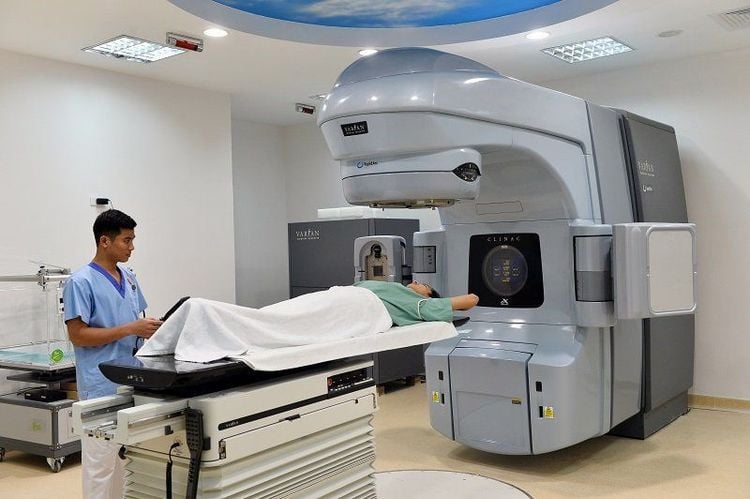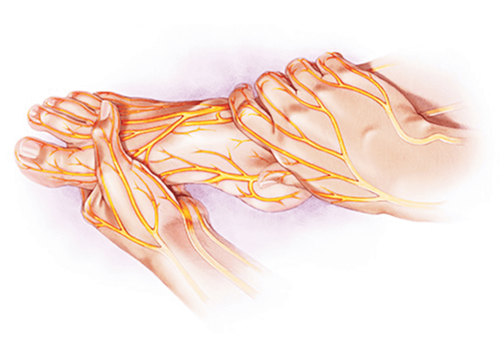This is an automatically translated article.
Benign peripheral nerve tumors can cause compression and loss of nerve conduction, causing many complications, the most dangerous of which is paralysis. Therefore, disease symptoms should be paid attention to early detection of the disease.1. What is a peripheral nerve tumor?
Peripheral nerve tumors form and grow near nerves, which transmit signals from the brain to other organs in the body. These nerves control muscle activity, allowing you to walk, blink, swallow, pick up objects, and other activities.Peripheral nerve tumors can occur anywhere in the body. Most tumors are not cancerous (malignant). The tumor grows causing pain, nerve damage, and loss of function in the affected area.
2. Symptoms of Peripheral Nerve Tumor
Symptoms and signs of a peripheral nerve tumor occur from the tumor's direct impact on a nerve or pressing on nearby nerves, blood vessels, or tissue.As a tumor grows, it has the potential to cause signs and symptoms, although tumor size does not always determine the effect. The risk of impact is determined by tumor location, so the effect of tumor size is not a major factor in some disease manifestations.
Signs and symptoms of peripheral nerve tumors vary depending on the location of the tumor and what tissue is affected. These include:
Swelling or lumps under the skin Pain, tingling or numbness Weakness or loss of function in the affected area Dizziness or loss of balance

Chóng mặt, mất thăng bằng là một trong số những triệu chứng của khối u thần kinh ngoại biên
3. Causes of Peripheral Nerve Tumors
The cause of benign peripheral nerve tumors is often unknown. Some cases are hereditary. The most common type is schwannoma, which is a benign tumor affecting the Schwann cells located in the peripheral or central nervous system.Another common type is neurofibromatosis. They usually form inside nerves, but sometimes they arise from several nerve bundles. Perineurioma is very rare, tumors can develop in the nerve or near the nerve. Tumors that grow next to the nerve can compress the nerve, causing many complications. The rest are slow-growing soft tumors of fat cells called cysts and lymphomas. Trauma or surgery can also be a cause.
4. Risk factors for peripheral nerve tumors
Peripheral nerve tumors have a higher risk of occurring in people with:Neurofibromatosis (types 1 and 2) and schwannomatosis: In these disorders, tumors develop on or near nerves throughout body. These tumors, often multiple, can lead to a variety of symptoms depending on their location. These tumors are usually not cancerous. History of radiation treatment: If you have been exposed to radiation, you have a higher risk of developing a peripheral nerve tumor many years later.

Các khối u thần kinh ngoại biên có nguy cơ xảy ra cao hơn ở những người có tiền sử điều trị bằng tia xạ
5. Complications of peripheral nerve tumors
Both noncancerous and cancerous peripheral nerve tumors can compress nerves, leading to complications, some of which can be permanent:Numbness and weakness in the affected area Loss function in the affected area Difficulty with balance Pain The treatment for a peripheral nerve tumor is surgery to remove the tumor. In some cases where tumors cannot be removed and they do not damage nearby healthy tissue and nerves, other treatments may be recommended.
There are several trends in the development of peripheral neuroendocrine tumors. In which, the tumor grows right at the nerve and the tumor grows and compresses the nerve. When there are symptoms, patients should not be subjective and should go to reputable facilities for timely examination and treatment.
If you want, you can book an appointment directly at Vinmec Hospitals and Clinics nationwide according to the list HERE.
Articles refer to the source: Mayoclinic.org
MORE:
Causes and treatment of inflammation, peripheral nerve pain Polyradiculitis and peripheral nerve disease in children Signs and causes of disorders vegetative nervous system













